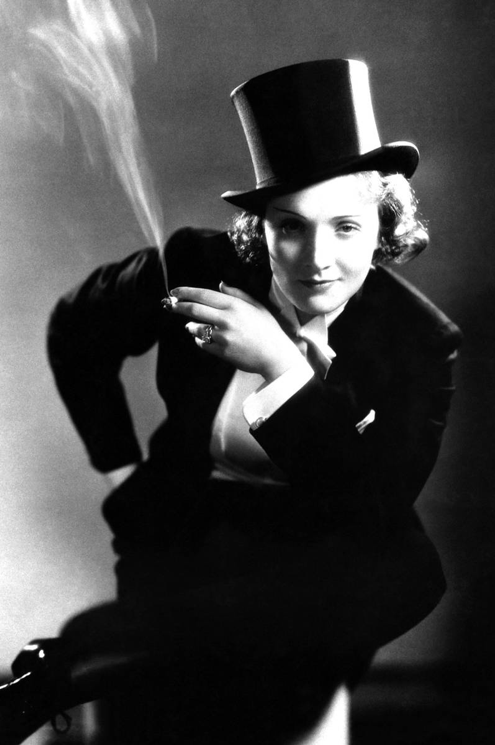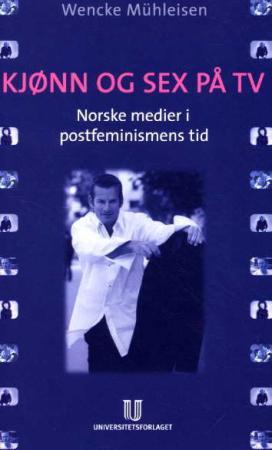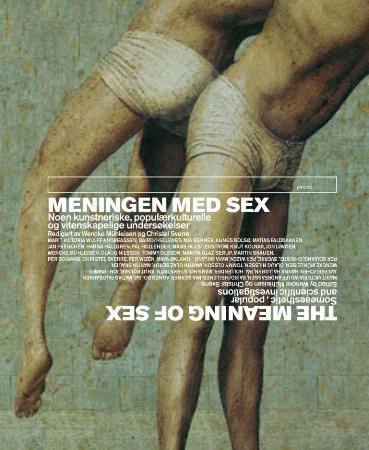To address the question of the significance of popular cultural representations at an elementary human level: We are all in a constant process of becoming through and in the culture that surrounds us. We have no choice, although as adults we can 'zap around', choose to and from, and cultivate our own interests in the deregulated media and the time of individual freedom of choice. But then the 'damage' has already happened. We, like the fish in the sea, have swam in the element we needed to live in. We were shaped by the cultural habitat that has surrounded us and which for the same reason has probably affected us deeply, through notions of the good life, feelings and desires. The popular cultural images, narratives and performances that surround us also satisfy a human need to be reflected in something, for instance role models, recognition and identification. So, yes, we can assume that popular culture has a great deal of influence. But when we ask the question of whether gender and sexuality in popular culture can be groundbreaking, or on the contrary conservative, we often get cought up in lengthy and contradictory discussions.
Read about Likestillingsutfordringene i media [The challenges of gender equality in the media]. Read also about Homo på rett måte [Being queer in the right way].

It is undoubtedly the case that most of the representations of gender and sexuality in film, television, music, etc., are well within the conventional taste and values of the majority. That is how it must be, all the while the commersial popular culture is a major global industry, whose foremost mandate is to make money for its owners. For the same reason, popular culture also has an interest in quickly capturing 'the new', the spectacular, scandalous, even taboo-breaking on the verge of obscene - because it attracts attention, voyeurism and represents elements of young consumers' preferences, which everyone always chases. The mainstream culture depends on appeal to broad spectrums of target groups, to be responsive and sensitive to social and cultural trends, but also to changes in society. It is against this background that we can ask whether popular culture has the potential to upset conventional notions of gender and sexuality.
Groundbreaking?
From music to television, over the last ten years, we have seen popular culture engage in LGBTQ + culture and themes to an extent we have never seen before. More than a decade ago, Lady Gaga became a global star. Both on and behind the stage, she was passionately engaged in LGBTQ + issues and rights. Her support for the queer subculture, as well as her bisexual performance, did not stand in the way of her great success and impact.
Read about Popfeminisme og hiphopmaskulinitet [Pop feminism and hip hop masculinity].
Over the past decade, Netflix has shown the most LGBTQ + characters in their streaming services with series such as Orange is the New Black, Queer Eye, Grace and Frankie, Sex Education and more. Soap series has also played a crucial role in normalizing LGBTQ+ people and themes. Formats that gain access to mainstream popular culture, that are seen by 'ordinary people', have played a vital role. But when commercial interests tightens its grip on queer narratives and representations, there is good reasons to be more critical about which stories are tradable with the potential for profit.
Tensions

There has long been a tension between queer subcultures and the popular mainstream culture, the latter being regarded as a depoliticizing and heteronormative force. On the other hand, there is something quite radical about queer stories and performance in the mainstream media. In 1993, British film theorist Richard Dyer articulated some of the fundamental problems associated with representations of marginalized groups, while simultaniously exploring the potential that these representations may have to affect us:
How a group is represented, presented over again in cultural forms, how an image of a member of a group is taken as representative of that group, how that group is represented in the sense of spoken for and on behalf of (whether they represent, speak for themselves or not), these all have to do with how members of groups see themselves and others like themselves, how they see their place in society, their right to the rights a society claims to ensure its citizens. Equally re-presentation, representativeness, representing have to do also with how others see members of a group and their place and rights, others who have the power to affect that place and those rights. How we are seen determines in part how we are treated; how we treat others is based on how we see them; such seeing comes from representation (Dyer 1993, 1).
The tension between the innovative and the conservative is well expressed in original American day-time talk shows and other 'low-cultural' formats on television. These have played a significant role in highlighting groups that deviate from white middle class behavior. Therefore, the talk show has meant a lot to the visibility of women, people of color, gays, transgender people and other marginalized groups, especially in the United States. This is what American media scholar Joshua Gamson discusses in detail in the book Freaks Talk Back: Tabloid Talk Shows and Sexual Nonconformity (1998). According to him, deregulation and market management of the media has led to a 'change from below' in the sense that new topics and new social groups have made their entry into the media. But what appears to some as a manifestation and a potential for democratization in relation to previously defined issues and marginalized groups, is understood by others as stigmatization and media exploitation, a kind of freak show, in which consumer culture capitalizes, appropriates and mainstreams subcultures and aesthetic avant-gardes.
Here we touch on the issue of tolerance:
Queer representations in popular culture are often grounded in the notion that when people only understand more, they will change their attitudes. According to the American media scholar Michael Warner, "practices that rely on the tolerant—in this case, the heterosexual—to accept what might be to them intolerable—in this case, the queer—necessarily overlook the desirability of queer culture” (Warner 2000, xxi).
Must not be left with only one prevailing model

Popular culture often represents queer people as if what they need the most is to be tolerated by straight people, and these representations construct a heterosexual audience who are in a position to be tolerant.
The paradox lies in the fact that popular representations that seek to be inclusive often offer only two positions: the tolerant normal and the tolerated (or deviant) other. The marginalization of queer people are thus reproduced as deviating with the need for approval. Queer culture is isolated in the 'ghetto of tolerance'.
The increasingly global popular culture, where virtually 'everyone' consumes the same, most often American series and movies, fashion, as well as Facebook's global spread, are also characterized by paradoxes. On the one hand, western norms and ideals of equality and diversity have been spread across the globe. This implies a real opportunity for influence in a democratizing direction related to gender and sexual diversity and rights in conservative and religious fundamentalist societies. But from a post-colonialist perspective, Western hegemony associated with the proliferation of popular cultural representations can also be problematic. For example, there exists globally and historically local cultures for multi-gender expressions and for ways of life that do not fit within the strict western binary categories of gender and sexuality. The massive influence of Western popular cultural expressions has often replaced, or erased, local traditions. And the western modern notion of homosexuality and heterosexuality, male and female – as essential and biologically distinct categories – prevail.
Read about Mexicos tredje genus (som er ved å forsvinne) [Mexico's third gender (which is about to disappear)].
The above-described paradoxes and tensions, about popular culture's representation and visualization of queer themes and queer lives, are worth keeping open with the persistent critical investigative and analytical gaze of consumers and researchers. Personally, and again to take the theme down to 'the elemental', it is crucial that we are not left with only one prevailing model of the good life, to which all may be included, where marginalized groups, such as queer, are accepted if they only adapt to the majority's tastes, norms and values. For what consequences will this have for the potentially radical force of queer culture, queer life and the utopian courage to think new, which we so desperately need in order to create something different, something that we can identify with and project into the future?
Read about Pris for analyse av egen performance [Award for analysis of own performance]. Read also article Seksualitet og estetikk – Retrospektivt blikk på egen performancevirksomhet 1978–1988 [Sexuality and Aesthetics - Retrospective look at own performance activities 1978–1988.].